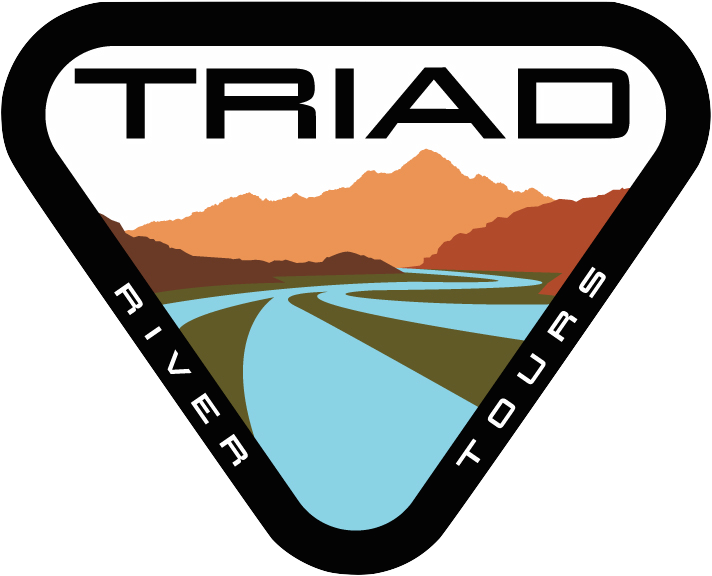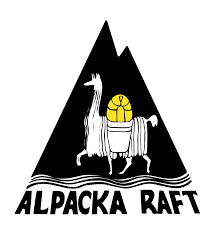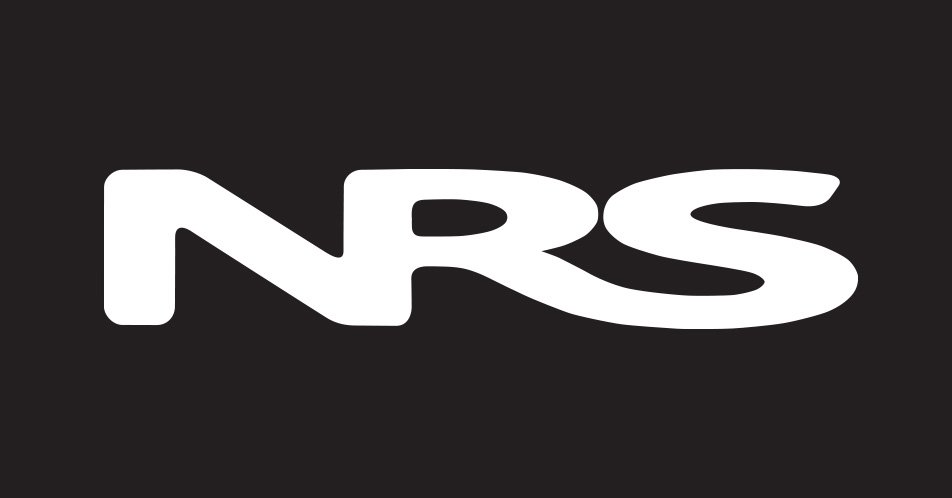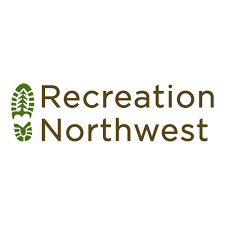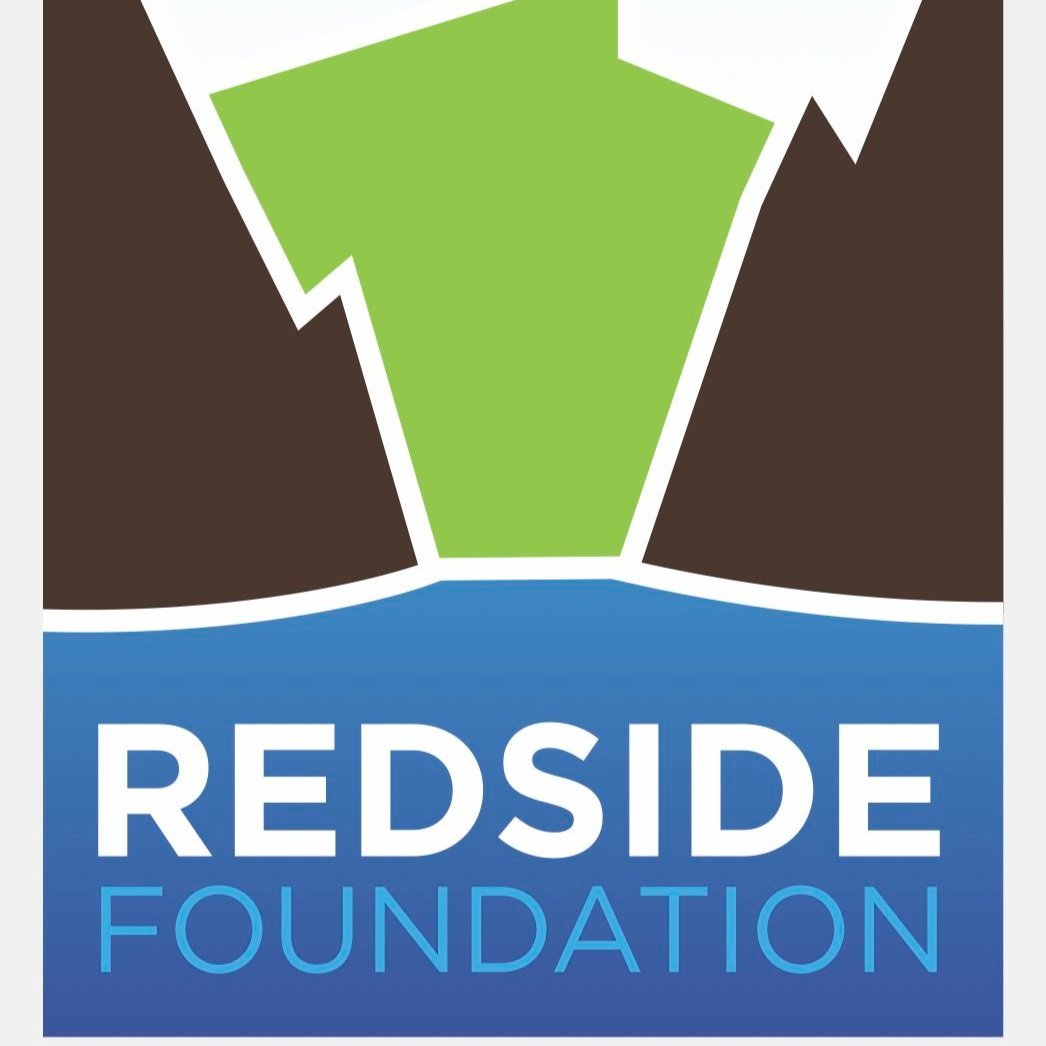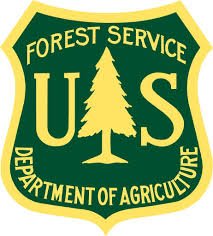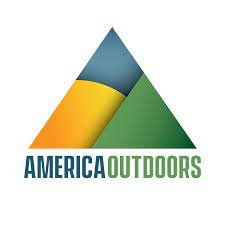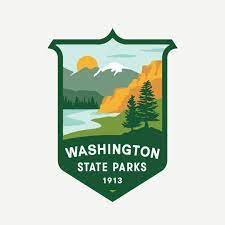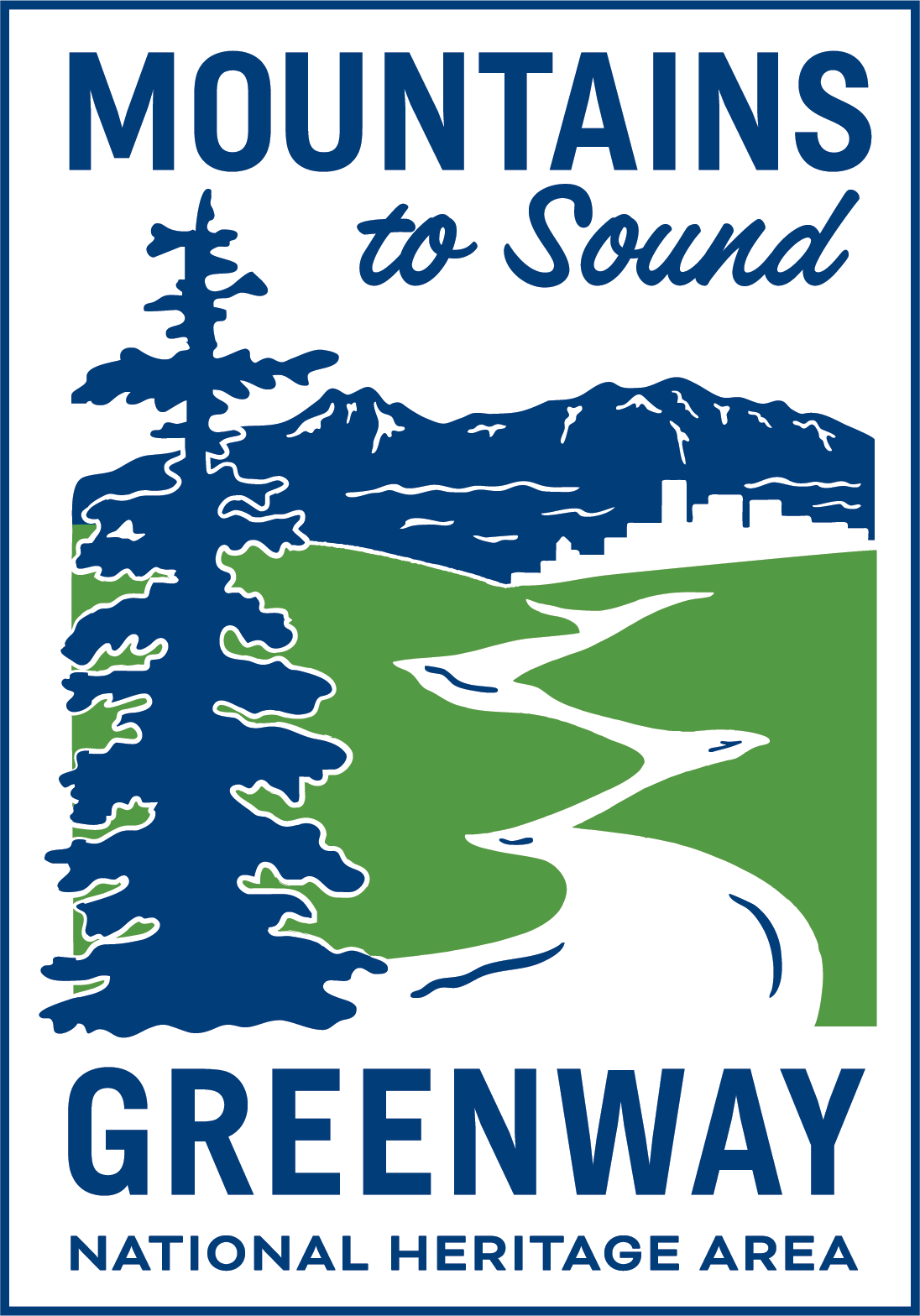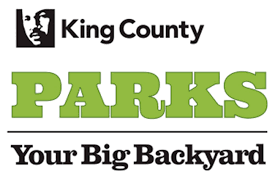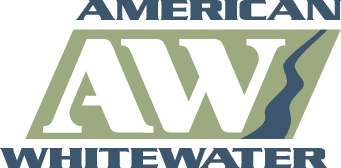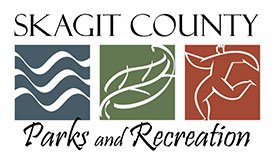6. Safety Protocols
These documents are a living description of river running systems of Triad River Tours on a specific section of river. While this document is at all times malleable at times of need and is always subservient to the directives of the professional guides of Triad River Tours, it should be considered an authoritative manuscript, while being subservient to the in-the-moment decision making of a professional guide staff. It details critically important data and river running systems and methods utilized by Triad River Tours on commercial whitewater trips. At all times because of the nature of river situations, all river situations are different and fall under the jurisdiction of the incident commander or trip leader.
Notes: All protocols are indeed written as suggested guidelines for professional guides. All river guides employed by Triad River Tours are trained professionals who have exceeded legal minimums, and as such they are given, in all situations, the authority to override what is written in this document should their judgement deem it in the best interests of all involved to do so.
6.1 | Sky1 | Protocol
River Details:
AW: http://www.americanwhitewater.org/content/River/detail/id/2209 https://www.americanwhitewater.org/content/River/detail/id/3409/ video: https://www.youtube.com/watch?v=syhtOOm9WbA
River Name: Skykomish Section Code: Sky1
Section Description: Skykomish River from Cable Drop to Big Eddy Nearest Town: Gold Bar/Index
Put in: Cable Drop/Hwy2 Bridge i.e. “Confluence Pool” Take out: Big Eddy
Length of trip: 8 miles from Cable Drop, 6 miles from Confluence Pool Duration at high water/low water: 1.5 hours -2.5 hours
Normal Season: May-August Logistics:
Meeting Location: Big Eddy State Park Distance from Seattle: 50 miles Distance from Bellingham: 88 miles
Guest Participation:
Minimum age: 18 (14 with previous experience of Class 3 or higher) Minimum weight: 90 lbs.
Wetsuits required: Yes (all times of year)
Borg level of exertion: Somewhat Hard 20%, Very Hard 80%
Notes: Guests should not attempt to run the Sky unless they are strong swimmers. Guests are encouraged to have previous whitewater experience prior to running the sky; preferably with Triad. Guests should be aware of the potential for a long swim, in cold water, in serious, life threatening rapids.
Itinerary (example):
8:30am: meet guides at Big Eddy, fit into gear 8:45am: drive to Cable Drop (et al)
9:00am: prepare to launch/begin safety talk
10:00am: on river (depending on traffic)
10:00am-12pm: have fun
12:00-12:15pm: off river
12:30pm: Trip Debrief
Guide Requirements:
• Trip Leader must have 6 trips on this section of river
• At least one SRT-1 (or equivalent) must be on the trip
• At least one guide with advanced first aid experience (does not need to be current) must be on the trip (example: WFR, WFA, EMT)
• Guides must all adhere to Washington State RCW 79A.60.430 http://app.leg.wa.gov/rcw/default.aspx?cite=79A.60.430
Risk Analysis:
Classification & Description: The Skykomish is the most difficult whitewater run in Washington and possibly the Northwest to guide in a raft because of Boulder Drop, which causes significant problems due to continuous technicality through three separate and consequential must make moves at all flows (entry, picket fence, house rocks).
Because of Boulder Drop a class 3 river becomes class 4 or even considered class 5 by many professional guides. While the Skykomish is closer to Seattle than the Wenatchee, it is still highly underutilized. The Sky is a great commercial run, but much respect must be given to Boulder Drop as it is both difficult and consequential.
Activities/Revenue streams: rafting, kayaking, photography Craft used: raft, kayak, cataraft
Number of rapids: 10
Highest possible classification: 5 Lowest possible classification: 4
Emergency Contacts:
Triad Office: 360-510-1243
Emergency Response (911):
Index Fire and Rescue: 10-15 minutes Gold Bar Fire Department: 10-15 minutes
Significant Hazards & Risk Management:
• Hypothermia (all levels): Wetsuits are required at all times. Evacuation procedures practiced ensuring expedited evacuation in case of hypothermia. Avoidance of flipping. Carry extra warm clothing and fire starting material.
• Entrapment (all levels): Detail foot entrapment during safety talk. Avoid flipping.
• Flush drowning (high water): Safety boats required in high water.
• Blunt trauma (all levels): Helmets required. Expedient rescues.
• Inexperienced rafters: Clear description of dangers and requirements on website.
Points of emphasis for guides:
• Big and Little House Rocks
• Entry move into Boulder Drop
• How to scout Boulder Drop
• Rock sieve to right of Big House Rock (low water)
• Traffic concerns along Highway 2
• Avoid swimming the Weir
• Be careful pulling out of the Confluence Pool pullout (bridge)
• Flip Recovery speed in Boulder Drop
• Working with other outfitters for safety
Evacuation Points:
Evac 1: confluence of N. and S. fork (bridge). Mile 35.5
Evac 2: Above Boulder Drop (roadside; ferry across). Mile 34
Evac 3: Split Rock. Mile 33
Evac 4: Proctor Creek (accessed from Fir Road at Big Bend). Mile 31
Significant Rapids:
1. Boulder Drop:
a. Suggested navigation line up to 1800 cfs: enter slightly to the right of umbrella rock, move to the left of the river in the pool above the picket fence, then proceed to take “airplane turn” around the left side of the river, then run the slot between “big house” and “little house” rocks.
b. Suggested navigation line between 1800-7500cfs (standard line): Enter slightly to the right of umbrella rock, stay aligned through the wave train and do not stray off course. Enter “the needle” with the point of the raft angled at approximately 20 degrees to the right (pointing at the right bank slightly). Drop the needle (approximately 6 foot drop) at a relatively slow rate of speed, and allow the front end of the raft to be directed back towards the center of the river, with the angle of the raft then pointing at the left bank. If possible, maneuver the raft behind “dragons back”. Proceed from there directly into the wave train and into the gap between “big house” and “little house” rock. Alternatively, if dragons back is underwater (above 5000cfs) simply make the move from right to left in order to complete the run through the gap between big house and little house rock.
c. Suggested navigation line above 8000cfs (Mercy shoot line): Enter slightly to the right of umbrella rock/hole and maneuver the raft to the right side of the river to miss the needle to the right. Follow the run through the rightmost slot until you are past “big house” rock to its right.
d. Flip and Recovery at Boulder drop can be difficult. Note that the Weir is directly below the rapid and it is best to recover guests prior to them swimming the Weir. Swimmers may be instructed to swim left in case of an accident. All flips require an incident report.
e. Boulder Drop will be scouted in any case where water levels have changed significantly since the previous run, or if the guide crew changes (those running guests) since the previous run.
Current Operational Procedures:
Upper bound cutoff: 14,000 cfs
Lower bound cutoff: 2800cfs w/ 8 loads (w/ stern mounts). Full cutoff is 1200 cfs.
High Water Craft (example): Maravia Williwaw 1.5 Low Water Craft (example): NRS E-136
Safety Boat: Cataraft or Kayak
Safety Boaters:
Kayaks will have a hard time pulling multiple people out of the pool at Boulder Drop so try to rescue high in the rapid and direct traffic. Escort swimmers through The Weir if necessary. Work with other boaters and outfitters under any and all circumstances to ensure the safest run through Boulder Drop for all people. Inexperienced safety boaters should be prepared to be on their own if they swim Boulder Drop. Catarafts are often preferred on the Sky due to the tendency for boats to flip in Boulder Drop and swim The Weir. Use hand signals.
6.2 | Sky2 | Protocol
River Details:
AW: none
River Name: Skykomish Section Code: Sky2
Section Description: Big Eddy to Sultan/”kayaking stretch” of the Sky Nearest Town: Gold Bar & Sultan
Put in: Big Eddy Take out: Sultan
Length of trip: 11 Miles
Duration at high water/low water: 1.8 hours 2.2 hours Normal Season: All Year
Logistics:
Meeting Location: Big Eddy State Park Distance from Seattle: 50 miles
Minimum age: 5 Minimum weight: 50 lbs.
Guide Requirements:
• Guides must all adhere to Washington State RCW 79A.60.430 http://app.leg.wa.gov/rcw/default.aspx?cite=79A.60.430
Risk Analysis:
Classification & Description: Sky2 is a class 2 with full “read and run” procedures from all craft.
Activities/Revenue streams: rafting, kayaking, fishing, powerboating, photography Craft used: raft, kayak, cataraft, jet sled
Number of rapids: 0
Highest possible classification: 3 Lowest possible classification: 2
6.3 | Sky3 | Protocol
River Details:
AW: none
River Name: Skykomish Section Code: Sky3
Section Description: Sultan to Monroe
Nearest Town: Sultan & Monroe
Put in: Sultan City Boat Launch
Take out: Monroe Boat Launch
Length of trip: 15 Miles
Duration at high water/low water: 1.8 hours 2.2 hours
Normal Season: All Year
Logistics:
Meeting Location: Sultan Boat Launch
Distance from Seattle: 40 miles
Guest Participation:
Minimum age: 5
Minimum weight: 50 lbs.
Guide Requirements:
• Guides must all adhere to Washington State RCW 79A.60.430 http://app.leg.wa.gov/rcw/default.aspx?cite=79A.60.430
Activities/Revenue streams: rafting, kayaking, fishing, powerboating, photography
Craft used: raft, kayak, cataraft, jet sled
Number of rapids: 0
Highest possible classification: 3
Lowest possible classification: 2
6.4 | Sky4 | Protocol
River Details:
AW: https://www.americanwhitewater.org/content/River/detail/id/2212/
River Name: North Fork Skykomish
Section Code: Sky4
Section Description: Skykomish River from Drumbeater to South Fork
Nearest Town: Skykomish & Index
Put in: Cable Drop/Hwy2 Bridge i.e. “Confluence Pool”
Take out: Big Eddy
Length of trip: 12.5 miles
Duration at high water/low water: 2.5 hours-4hours
Normal Season: May-July
Logistics:
Meeting Location: Big Eddy State Park
Distance from Seattle: 50 miles
Distance from Bellingham: 88 miles
Guest Participation:
Minimum age: 18 (14 with previous experience of Class 3 or higher)
Minimum weight: 90 lbs.
Wetsuits required: Yes (all times of year)
Borg level of exertion: Somewhat Hard 20%, Very Hard 80%
Notes: Guests should not attempt to run the NF Sky unless they are strong swimmers. Guests are encouraged to have previous whitewater experience prior to running the sky; preferably with Triad. Guests should be aware of the potential for a long swim, in cold water, in serious, life threatening rapids.
Guide Requirements:
• At least one SRT-1 (or equivalent) must be on the trip
• At least one guide with advanced first aid experience (does not need to be current) must be on the trip (example: WFR, WFA, EMT)
• Guides must all adhere to Washington State RCW 79A.60.430 http://app.leg.wa.gov/rcw/default.aspx?cite=79A.60.430
Risk Analysis:
Classification & Description: The North Fork Skykomish represents continuous class 4 whitewater and is definitively a very challenging complete river trip for most guides and must be taken on carefully by only experienced and qualified guides and excellent equipment suited for the task.
Activities/Revenue streams: rafting, kayaking, photography Craft used: raft, kayak, cataraft
Number of rapids: 20
Highest possible classification: 5 Lowest possible classification: 4
Emergency Contacts:
Triad Office: 360-510-124
Emergency Response (911):
Unknown
Significant Hazards & Risk Management:
• Hypothermia (all levels): Wetsuits are required at all times. Evacuation procedures practiced ensuring expedited evacuation in case of hypothermia. Avoidance of flipping. Carry extra warm clothing and fire starting material.
• Entrapment (all levels): Detail foot entrapment during safety talk. Avoid flipping.
• Flush drowning (high water): Safety boats required in high water.
• Blunt trauma (all levels): Helmets required. Expedient rescues.
• Inexperienced rafters: Clear description of dangers and requirements on website.
Points of emphasis for guides:
• Continuous whitewater protocol
• “Exposure” without easy evacuation access
• High level of commitment
• Exhausting amount of paddling
• Guests must be in good condition
Evacuation Points:
TBD
Significant Rapids:
• Drumbeater (5)
• Let’s Make A Deal (4+)
• Rooster Tail (4+)
• El Nino (4)
• Minefield (3+)
Current Operational Procedures:
Upper bound cutoff: 4,500
Lower bound cutoff: 2250
High Water Craft (example): Maravia Williwaw 1.5
Low Water Craft (example): NRS E-136
Safety Boat: Cataraft and/or Kayak
6.5 | Sky5 | Protocol
River Details:
AW: none
River Name: South Fork Skykomish
Section Code: Sky5
Section Description: South Fork Sky
Nearest Town: Index
Put in: Beckler River
Take out: Bridge Above Baring
Length of trip: 9.5 Miles
Duration at high water/low water: 3 hours
Normal Season: All Year
Logistics:
Meeting Location: Big Eddy
Distance from Seattle: 50 miles
Guest Participation:
Minimum age: 5
Minimum weight: 50 lbs.
Guide Requirements:
• Guides must all adhere to Washington State RCW 79A.60.430 http://app.leg.wa.gov/rcw/default.aspx?cite=79A.60.430
Risk Analysis:
Classification & Description: Sky5 is a class 2 with full “read and run” procedures from all craft.
Activities/Revenue streams: rafting, kayaking, fishing, photography
Craft used: raft, kayak, cataraft
Number of rapids: 0
Highest possible classification: 3
Lowest possible classification: 2
6.6 | Sauk1 | Protocol
River Details:
AW: https://www.americanwhitewater.org/content/River/detail/id/2198/
River Name: Upper Sauk
Section Code: Sauk1
Section Description: Sauk River from Bedal to White Chuck Boat
Launch Nearest Town: Darrington
Put in: Bedal Campground (near bridge)
Take out: White Chuck Boat
Launch Length of trip: 8.3 Miles
Duration at high water/low water: 2 hours -3.5 hours
Normal Season: May-August
Logistics:
Meeting Location: Old School Park in Darrington, WA.
Distance from Seattle: 80 miles
Distance from Bellingham: 85 miles
Guest Participation:
Minimum age: 7
Minimum weight: 50 lbs.
Wetsuits required: Yes
Borg level of exertion: Somewhat Hard 80%, Very Hard 20%
Guide Requirements:
• At least one guide with advanced first aid experience must be on the trip (example: WFR, WFA, EMT)
• Guides must all adhere to Washington State RCW 79A.60.430 http://app.leg.wa.gov/rcw/default.aspx?cite=79A.60.430
Activities/Revenue streams: rafting, kayaking, fishing, photography Craft used: raft, kayak, drift boat, cataraft
Number of rapids: 3
Highest possible classification: 3+
Lowest possible classification: 2
Emergency Contacts:
Triad Office: 360-510-1243
Emergency Response (911):
Darrington Fire Department: 30 minutes
Significant Hazards & Risk Management:
• Hypothermia (all levels): Wetsuits are required at all times. Evacuation procedures practiced ensuring expedited evacuation in case of hypothermia. Avoidance of flipping. Carry extra warm clothing and fire starting material.
• Entrapment (all levels): Detail foot entrapment during safety talk. Avoid flipping.
• Flush drowning (high water): Safety boats required in high water.
• Blunt trauma (all levels): Helmets required. Expedient rescues.
• Inexperienced rafters: Clear description of dangers and requirements on website.
Evacuation Points:
None (notably)
Current Operational Procedures:
Upper bound cutoff: 7,000 cfs
Lower bound cutoff: 1500cfs w/ 8 loads. Full cutoff is 1000 cfs.
High Water Craft: Maravia Williwaw 1.5
Low Water Craft: NRS E-136 (3 thwarts)
Safety Boat: Cataraft or Kayak
Notes: Kayaks are usually preferred as safety boats on this river due to its dynamic nature. Also, the Sauk is dynamic with high wood risk, so scouting runs are common.
6.7 | Sauk2 | Protocol
River Details:
AW: http://www.americanwhitewater.org/content/River/detail/id/2199
video: https://www.youtube.com/watch?v=4GiMooNyDHQ
River Name: Middle Sauk
Section Code: Sauk2
Section Description: Sauk River from White Chuck to Bachman
Nearest Town: Darrington
Put in: White Chuck Boat Launch
Take out: Bachman Park
Length of trip: 7 Miles
Duration at high water/low water: 1.2 hours 2.5 hours
Normal Season: May-August
Logistics:
Meeting Location: Old School Park in Darrington, WA.
Distance from Seattle: 80 miles
Distance from Bellingham: 85 miles
Guest Participation:
Minimum age: 18 (14 with previous experience of Class 3 or higher)
Minimum weight: 90 lbs.
Wetsuits required: Yes
Borg level of exertion: Somewhat Hard 50%, Very Hard 50%
Notes: The Sauk tends to bring in less experienced rafters that are not truly ready for continuous class 3 whitewater which it provides in abundance. Many people booking the Sauk are beginners who do not want to take the “beginner run” on the Skagit. As a result, this offering pressures the guides to instruct guests harshly as they may not fully realize (or want to admit) that they are in over their proverbial heads.
Trip Itinerary (example):
9am: meet guides at Old School Park, fit into gear
9:15am: drive to White Chuck Boat Launch
9:30am: prepare to launch/begin safety talk
10:15am: on river (depending on traffic)
10:15am-12:15pm: have fun
12:15-12:30pm: off river/ride back to your car at Old School Park
12:45pm: Trip Debrief
Guide Requirements:
● Trip Leader must have 6 trips on this section of river
● At least one SRT-1 (or equivalent) must be on the trip
● At least one guide with advanced first aid experience must be on the trip (example: WFR, WFA, EMT)
● Guides must all adhere to Washington State RCW 79A.60.430 http://app.leg.wa.gov/rcw/default.aspx?cite=79A.60.430
Risk Analysis:
Classification & Description: The Sauk is dangerous at high water and severely technical at low water. It is near the road most of the time but even then the road is difficult to access due to significant underbrush, etc. The Sauk is ultimately quite remote which makes it difficult for rescues of all kinds. The Sauk is a class 3 river, for the most part, but if taken lightly it has the potential to wreak havoc for guides that do not respect it.
Number of rapids: 10
Highest possible classification: 4
Lowest possible classification: 3
Emergency Contacts:
Triad Office: 360-510-1243
Emergency Response (911):
Darrington Fire Department: 15-20 minutes
Significant Hazards & Risk Management:
● Hypothermia (all levels): Wetsuits are required at all times. Evacuation procedures practiced ensuring expedited evacuation in case of hypothermia. Avoidance of flipping. Carry extra warm clothing and fire starting material.
● Entrapment (all levels): Detail foot entrapment during safety talk. Avoid flipping.
● Flush drowning (high water): Safety boats required in high water.
● Blunt trauma (all levels): Helmets required. Expedient rescues.
● Inexperienced rafters: Clear description of dangers and requirements on website.
Points of emphasis for guides:
● Flips in Jaws can result in swims through the following rapid sometimes called
“Demon Seed”
● People underestimate the Sauk
● Evacuation points are critical as walking through the brush is very difficult
● Technical whitewater in low water
● Watch out for wood (sometimes freshly deposited wood)
● 8 loads in low water require skill
● Alligator tends to create problems in low water
● Watch current lines on bottom ½ of section as it flattens and slows
Evacuation Points:
Evac 1: Below Alligator rapid, beach on river left (road access from “turnaround” camp)
Evac 2: Murphy Creek Trail
Evac 3: Popeye (Old Sauk River Trail)
Evac 4: Clear Creek (HWY 530 bridge)
Significant Rapids:
Jaws: This rapid is complex and long. Notably, there is a sneak route to the far left in high water (above 3500cfs on the AB White Chuck USGS gauge). You can tell it is high water when the channel to the right of the island opens up, and you therefore must wade across it to scout the rapid from the newly formed “island”. Jaws is not difficult in high water if you take the sneak, but if you take the meat of the rapid in flows above 2000, you must be certain to go right or left of “Demon Seed” rock, named by Lonnie Hutson of Sundog Expeditions after a failed attempt to run the pour-over. Typically, the right route is easiest as it has more current going there, but the left run becomes more available as flows drop, and the diagonal wave ceases to push boats towards the right bank. Jaws can be scouted from the right, and it should be scouted if flows change dramatically during high water conditions.
Alligator (low water only): This rapid has a difficult entrance in low water as guides must perform a very abrupt maneuver in technical water, moving from river left across the entire river to river right as the river “slides” across boulders to the bottom. There is a rock/hole in the bottom center that is best avoided at most flows, though it is not much of a raft flipper.
Current Operational Procedures:
Upper bound cutoff: 7,000 cfs
Lower bound cutoff: 1500cfs w/ 8 loads. Full cutoff is 1000 cfs.
High Water Craft: Maravia Williwaw 1.5
Low Water Craft: NRS E-136 (3 thwarts)
Safety Boat: Cataraft or Kayak
Notes: Kayaks are usually preferred as safety boats on this river due to its dynamic nature. Also, the Sauk is dynamic with high wood risk, so scouting runs are common.
6.8 | Sauk3 | Protocol
River Details:
AW: https://www.americanwhitewater.org/content/River/detail/id/2201/
River Name: Darrington area Sauk
Section Code: Sauk3
Section Description: Sauk River from Backman Park to Sauk River Park
Note: Can be broken up into two sections (take out or put in at Darrington city bridge)
Nearest Town: Darrington
Put in: Backman Park
Take out: Sauk River Park
Length of trip: 14 Miles
Duration at high water/low water: 3 hours -5.5 hours
Normal Season: May-August
Logistics:
Meeting Location: Old School Park in Darrington, WA.
Distance from Seattle: 80 miles
Distance from Bellingham: 85 miles
Guest Participation:
Minimum age: 7
Minimum weight: 50 lbs.
Wetsuits required: Yes
Borg level of exertion: Somewhat Hard 80%, Very Hard 20%
Guide Requirements:
• Guides must all adhere to Washington State RCW 79A.60.430 http://app.leg.wa.gov/rcw/default.aspx?cite=79A.60.430
Activities/Revenue streams: rafting, kayaking, fishing, photography
Craft used: raft, kayak, driftboat, cataraft
Number of rapids: 3
Highest possible classification: 3
Lowest possible classification: 2
Emergency Contacts:
Triad Office: 360-510-1243
Emergency Response (911):
Darrington Fire Department: 15-20 minutes
Significant Hazards & Risk Management:
• Hypothermia (all levels): Wetsuits are required at all times. Evacuation procedures practiced ensuring expedited evacuation in case of hypothermia. Avoidance of flipping. Carry extra warm clothing and fire starting material.
• Entrapment (all levels): Detail foot entrapment during safety talk. Avoid flipping.
• Flush drowning (high water): Safety boats required in high water.
• Blunt trauma (all levels): Helmets required. Expedient rescues.
• Inexperienced rafters: Clear description of dangers and requirements on website.
Evacuation Points:
Roadside nearly the entire trip
Current Operational Procedures:
Upper bound cutoff: 2,000 cfs
Lower bound cutoff: 30000cfs (Sauk at Sauk gauge)
High Water Craft: Maravia Williwaw 1.5
Low Water Craft: NRS E-136 (3 thwarts)
Safety Boat: Cataraft or Kayak
6.9 | Sauk4 | Protocol
River Details:
River Name: Lower Sauk/Confluence Sauk
Section Code: Sauk4
Section Description: Sauk River Park to Faber Landing (Skagit River)
Nearest Town: Darrington & Rockport
Put in: Sauk River Park
Take out: Faber Landing
Length of trip: 17 Miles
Duration at high water/low water: 4 hours -6 hours
Normal Season: May-August
Logistics:
Meeting Location: Old School Park in Darrington, WA.
Distance from Seattle: 80 miles
Distance from Bellingham: 85 miles
Guest Participation:
Minimum age: 7
Minimum weight: 50 lbs.
Wetsuits required: Yes
Borg level of exertion: Somewhat Hard 80%, Very Hard 20%
Guide Requirements:
• Guides must all adhere to Washington State RCW 79A.60.430 http://app.leg.wa.gov/rcw/default.aspx?cite=79A.60.430
Activities/Revenue streams: rafting, kayaking, fishing, photography
Craft used: raft, kayak, driftboat, cataraft
Number of rapids: 3
Highest possible classification: 3
Lowest possible classification: 2
Emergency Contacts:
Triad Office: 360-510-1243
Emergency Response (911):
Darrington Fire Department: 15-20 minutes
Significant Hazards & Risk Management:
• Hypothermia (all levels): Wetsuits are required at all times. Evacuation procedures practiced ensuring expedited evacuation in case of hypothermia. Avoidance of flipping. Carry extra warm clothing and fire starting material.
• Entrapment (all levels): Detail foot entrapment during safety talk. Avoid flipping.
• Flush drowning (high water): Safety boats required in high water.
• Blunt trauma (all levels): Helmets required. Expedient rescues.
• Inexperienced rafters: Clear description of dangers and requirements on website.
Evacuation Points:
Roadside nearly the entire trip
Current Operational Procedures:
Upper bound cutoff: 2,000 cfs
Lower bound cutoff: 30000cfs (Sauk at Sauk gauge)
High Water Craft: Maravia Williwaw 1.5
Low Water Craft: NRS E-136 (3 thwarts)
Safety Boat: Cataraft or Kayak
6.10 | SK1 | Protocol
River Details:
AW: none
River Name: Skagit
Section Code: SK1
Section Description: Faber Landing to Baker River
Nearest Town: Concrete
Put in: Faber Landing
Take out: Baker River (mouth) near Concrete
Length of trip: 5 Miles
Duration at high water/low water: 1.8 hours 2.2 hours
Normal Season: All Year
Logistics:
Meeting Location: Howard Miller Steelhead Park
Distance from Seattle: 90 miles
Distance from Bellingham: 55 miles
Guest Participation:
Minimum age: 5
Minimum weight: 50 lbs.
Guide Requirements:
• Guides must all adhere to Washington State RCW 79A.60.430 http://app.leg.wa.gov/rcw/default.aspx?cite=79A.60.430
Risk Analysis:
Classification & Description: The Skagit is a class 2 with full “read and run” procedures from all craft.
Activities/Revenue streams: rafting, kayaking, fishing, powerboating, photography
Craft used: raft, kayak, cataraft, jet sled
Number of rapids: 0
Highest possible classification: 3
Lowest possible classification: 2
6.11 | SK2 | Protocol
River Details:
AW: none
River Name: Skagit
Section Code: SK2
Section Description: Howard Miller Steelhead Park to Faber Landing
Nearest Town: Rockport
Put in: Howard Miller Steelhead Park
Take out: Faber Landing
Length of trip: 5 Miles
Duration at high water/low water: 1.8 hours 2.2 hours
Normal Season: All Year
Logistics:
Meeting Location: Howard Miller Steelhead Park
Distance from Seattle: 90 miles
Distance from Bellingham: 55 miles
Guest Participation:
Minimum age: 5
Minimum weight: 50 lbs.
Guide Requirements:
• Guides must all adhere to Washington State RCW 79A.60.430 http://app.leg.wa.gov/rcw/default.aspx?cite=79A.60.430
Activities/Revenue streams: rafting, kayaking, fishing, powerboating, photography
Craft used: raft, kayak, cataraft, jet sled
Number of rapids: 0
Highest possible classification: 3
Lowest possible classification: 2
6.12 | SK3 | Protocol
River Details:
AW: https://www.americanwhitewater.org/content/River/detail/id/2205/
River Name: Skagit
Section Code: SK3
Section Description: Eagle Watching section | Marblemount to Rockport
Nearest Town: Rockport
Put in: Marblemount Boat Launch
Take out: Howard Miller Steelhead Park
Alternate Take out: Sutter Creek
Length of trip: 8 Miles
Duration at high water/low water: 1.8 hours 2.2 hours
Normal Season: All Year
Logistics:
Meeting Location: Howard Miller Steelhead Park
Distance from Seattle: 90 miles
Distance from Bellingham: 55 miles
Guest Participation:
Minimum age: 5
Minimum weight: 50 lbs.
Guide Requirements:
• Guides must all adhere to Washington State RCW 79A.60.430 http://app.leg.wa.gov/rcw/default.aspx?cite=79A.60.430
Activities/Revenue streams: rafting, kayaking, fishing, powerboating, photography
Craft used: raft, kayak, cataraft, jet sled
Number of rapids: 0
Highest possible classification: 3
Lowest possible classification: 2
6.13 | SK4 | Protocol
River Details:
AW: https://www.americanwhitewater.org/content/River/detail/id/2205/
River Name: Skagit
Section Code: SK4
Section Description: Copper to Marblemount
Nearest Town: Marblemount
Put in: Copper Creek
Take out: Marblemount Boat Launch
Length of trip: 6 Miles
Duration at high water/low water: 1.4 hours 2.2 hours
Normal Season: All Year
Logistics:
Meeting Location: Marblemount Boat Launch
Distance from Seattle: 100 miles
Distance from Bellingham: 65 miles
Guest Participation:
Minimum age: 5
Minimum weight: 50 lbs.
Guide Requirements:
• Guides must all adhere to Washington State RCW 79A.60.430 http://app.leg.wa.gov/rcw/default.aspx?cite=79A.60.430
Activities/Revenue streams: rafting, kayaking, fishing, photography
Craft used: raft, kayak, cataraft
Number of rapids: 0
Highest possible classification: 3
Lowest possible classification: 2
6.14 | SK5 | Protocol
River Details:
AW: https://www.americanwhitewater.org/content/River/detail/id/2206/
USGS: http://waterdata.usgs.gov/usa/nwis/uv?12178000
Video: https://vimeo.com/128435332?utm_source=email&utm_medium=clip- transcode_complete-finished-20120100&utm_campaign=
River Name: Skagit
Section Code: SK5
Section Description: Skagit River from Goodell to Copper
Nearest Town: Marblemount
Put in: Goodell Creek Boat Launch
Take out: Copper Creek
Length of trip: 8 Miles
Duration at high water/low water: 1.8 hours 2.2 hours
Normal Season: All Year
Logistics:
Meeting Location: Marblemount Boat Launch
Distance from Seattle: 100 miles
Distance from Bellingham: 65 miles
Guest Participation:
Minimum age: 7
Minimum weight: 50 lbs.
Wetsuits required: Yes, when water temperatures are below 50 degrees.
Borg level of exertion: Somewhat Hard 90%, Very Hard 10%
Notes: The Skagit is cold, but very predictable, straightforward, and at times big. Road access is relatively simple compared to other rivers. A small but reliable first response team resides in Marblemount. Wood issues are rare but possible. The S-Bends is the only significant rapid on the run. This trip beckons inexperienced rafters, so medical conditions, kids, and people with disabilities are primary focuses in terms of risk management.
Trip Itinerary (example):
9am: meet guides at Marblemount Boat Launch, fit into gear
9:15am: drive to Goodell Creek Boat Launch
9:30am: prepare to launch/begin safety talk
10:15am: on river (depending on traffic)
10:15am-12:15pm: have fun
12:15-12:30pm: off river/ride back to your car at Marblemount Boat Launch
12:45pm: in your car headed home in style with a fresh reminder of the greatness of your relationship with mother nature.
Guide Requirements:
• Trip Leader must have 1 trip on this section of river
• At least one SRT-1 swiftwater rescue trained guide (or equivalent) must be on the trip
• At least one guide with advanced first aid experience (does not need to be current) must be on the trip (example: WFR, WFA, EMT)
• Guides must all adhere to Washington State RCW 79A.60.430 http://app.leg.wa.gov/rcw/default.aspx?cite=79A.60.430
Risk Analysis:
Classification & Description: The Skagit is a class 2 river with the S-Bends which can measure as a gentle class 3- towards nearly being class 4 in higher flows. It is a great beginner and family section, and is an ideal training grounds for inexperienced commercial guides.
Activities/Revenue streams: rafting, kayaking, photography
Craft used: raft, kayak, cataraft
Number of rapids: 5
Highest possible classification: 3
Lowest possible classification: 2
Emergency Contacts:
Triad Office: 360-510-1243
Emergency Response (911):
Marblemount: 20-25 minutes
Note: The National Park does not have a river rescue team.
Significant Hazards & Risk Management:
• Hypothermia (all levels): Wetsuits are required when river temperatures are below 50 degrees. Evacuation procedures practiced to ensure expedited evacuation in case of hypothermia. Avoidance of flipping. Carry extra warm clothing and fire starting material.
• Entrapment (all levels): Detail foot entrapment during safety talk. Avoid flipping.
• Flush drowning (high water): Safety boats required in high water.
• Blunt trauma (all levels): Helmets required. Expedient rescues.
• Inexperienced rafters: Clear description of dangers and requirements on website.
Points of emphasis for guides:
• The right side of the second rapid in the S-Bends tends to push rafts towards the sharp rocks on the bank, especially in lower water.
• Inexperienced rafters abound.
• Break-ins have been experienced at the meet up location
• Boat Launch issues are prevalent due to private boaters (especially in August)
• Parking jams occur at Copper Creek take-out, and as a result we must be very careful about placement of vehicles on the USFS road leading to the boat launch. Occasionally we leave the bus on the Highway.
Evacuation Points:
No specific evacuation points have been detailed for this protocol, as the road parallels the river for much of the run. One trip down this river will make obvious the access points, which are numerous and prevalent.
Significant Rapids:
S-Bends: This rapid has 4 sections, of which the first two are more commonly the biggest and most consequential. The first rapid has towering waves and pushes you ultimately towards the left bank. The second pushes hard to the right and then a wave train leads you towards the center/left of the river. The third features a large rock that creates a hole/wave, capable of flipping a raft at most flows. It is easy to miss this rock to the right, and yet another more technical line exists to the left of it. The fourth rapid is simple, and has a rock towards the bottom which pushes the river to the right.
Hydraulics form at the bottom of the fourth rapid which are powerful enough to cause significant “down time” for guests, even in type 5 PFDs.
Update 2022: In the summer of ‘22 we flipped 2 rafts in the second wave of the second rapid. Notably, both of these flips were by experienced veteran guides who were running the standard commercial line, and were not the result of mistakes. Both of these flips occurred between 3k-5k cfs. This wave is very powerful and can be avoided to the left. Hitting the wave squarely with momentum will likely punch through. This wave changed during the floods of Novermber 2021, and will likely not return to its previously smooth splashy form. This is a crashing “haystack” wave and it is a flipper.
Current Operational Procedures:
Upper bound cutoff: None
Lower bound cutoff: None
Note: Seattle City Light is obligated contractually to keep this river above 1500cfs. Runs at this flow are low and arduous but nowhere near any pressing safety concern. Triad has run this river numerous times between 1500-2000cfs. Triad has also ran this river as high as 20k cfs without issue, although the waves in the S-Bends do get big and are significant class 3 at those levels (to call them class 4 would be incorrect, but the river gets big and powerful at those levels).
High Water Craft: Maravia Williwaw 1.5
Low Water Craft: Maravia Williwaw 1.5
6.15 | Sno1 | Protocol
AW: https://www.americanwhitewater.org/content/River/detail/id/2219/
USGS: https://waterdata.usgs.gov/nwis/uv?site_no=12141300
Native History: http://www.snoqualmietribe.us/history
River Name: Upper Middle Fork Snoqualmie
Section Code: Sno1
Section Description: Middle Fork Snoqualmie from Taylor River to Concrete Bridge
Nearest Town: North Bend
Put in: Bridge View pullout (mile 11.3, as advised by Tom O’Keefe)
Take out: Concrete Bridge (mile 5)
Length of trip: 7 Miles
Duration at high water/low water: 2/3 hours
Normal Season: April-mid June
Logistics:
Meeting Location: Torguson Park in North Bend
Distance from Seattle: 30 miles
Distance from Bellingham: 110 miles
Guest Participation:
Minimum age: 10
Minimum weight: 50 lbs.
Wetsuits required: Yes
Borg level of exertion: Somewhat Hard 90%, Very Hard 10%
Notes: This is a section scouted with Tom O’Keefe of AW and we can expect river access to improve over time. Note that traffic is awful on sunny weekends and care should be taken to arrive on time. Wood hazards are prevalent and during higher flows very dangerous.
Trip Itinerary (example):
9am: meet guides at Torguson Park, fit into gear
9:15am: drive to Bridge View Put in
9:45am: prepare to launch/begin safety talk
10:30am: on river (depending on traffic)
10:30am-12:30pm: have fun
12:30-12:45pm: off river/ride back to your car at Torguson Park
12:45pm: in your car headed home in style with a fresh reminder of the greatness of your relationship with mother nature.
Guide Requirements:
• Trip Leader must have 2 trips on this section of river
• At least one SRT-1 (or equivalent) must be on the trip
• At least one guide with advanced first aid experience (does not need to be current) must be on the trip (example: WFR, WFA, EMT)
• Guides must all adhere to Washington State RCW 79A.60.430 http://app.leg.wa.gov/rcw/default.aspx?cite=79A.60.430
Risk Analysis:
Classification & Description: The Snoqualmie is sneaky, cold, and provides a challenge. It is similar to the Sauk in many ways, with several small rapids leading up to one major rapid that includes large boulders and consequences. The danger here exists primarily in two aspects; cold water, and the abrupt must make move in House Rocks, particularly during higher water. Inexperienced guests are often an issue, while (typically) this early season run brings in some of the best guides Triad has to offer to counterbalance the risk.
Number of rapids: 3
Highest possible classification: 3
Lowest possible classification: 2
Emergency Contacts:
Triad Office: 360-510-1243
Emergency Response:
North Bend Fire & Rescue: 20-30 minutes
Significant Hazards & Risk Management:
• Hypothermia (all levels): Wetsuits are required at all times. Evacuation procedures practiced to ensure expedited evacuation in case of hypothermia. Avoidance of flipping. Carry extra warm clothing and fire starting material.
• Entrapment (all levels): Detail foot entrapment during safety talk. Avoid flipping.
• Flush drowning (high water): Safety boats required in high water.
• Blunt trauma (all levels): Helmets required. Expedient rescues.
• Inexperienced rafters: Clear description of dangers and requirements on website.
Points of emphasis for guides:
• Inexperienced paddlers Evacuation Points:
Evac 1: River Bend pullout (mile 10.2). This access is right next to the road.
Evac 2: Russian Butte view pull out (mile 8)
Significant Rapids:
Headwall Rapid (Class 2+) Rainy Creek Rapid (Class 2+)
Current Operational Procedures:
Upper bound cutoff: 9,000 cfs
Lower bound cutoff: 1200cfs
Note: Sno1 is used as an alternate run for Sno2 commercial trips during high water. Sno1 upper bound cutoff is 3500cfs. Above 3500cfs expect to run Sno1 instead of Sno2.
High Water Craft: Maravia Williwaw 1.5
Medium Water Craft: NRS E-136
Safety Boat: Cataraft or Kayak
Notes: No preference in regards to safety boat.
Rescue Procedures: Standard
6.16 | Sno2 | Protocol
River Details:
AW: https://www.americanwhitewater.org/content/River/detail/id/2220
USGS: https://waterdata.usgs.gov/nwis/uv?site_no=12141300
Native History: http://www.snoqualmietribe.us/history
River Name: Middle Fork Snoqualmie
Section Code: Sno2
Section Description: “Middle Middle” Snoqualmie from the concrete bridge to Tanner
Nearest Town: North Bend
Put in: Concrete Bridge
Take out: Tanner (easement)
Length of trip: 7 Miles
Duration at high water/low water: 1.5-2 hours
Normal Season: April-mid June
Logistics:
Meeting Location: Torguson Park in North Bend
Distance from Seattle: 30 miles
Distance from Bellingham: 110 miles
Guest Participation:
Minimum age: 18 (14 with previous experience of Class 3 or higher)
Minimum weight: 90 lbs.
Wetsuits required: Yes
Borg level of exertion: Somewhat Hard 50%, Very Hard 50%
Notes: The Snoqualmie is an early season run and thus often very cold (often deceptively so), and the run is rarely in the sun. The river itself is relatively and consistently clear of wood, although large trees line the banks and a wood issue could come into play at some point. Private land owners dot the landscape on the lower end. Evacuations are short but complex due to steep banks. Guests often choose the Snoqualmie out of convenience, as it is the closest section we offer in proximity to Seattle, but it is not always kind. The Snoqualmie serves up a significant whitewater challenge through House Rocks, and in high water this rapid is certainly class 4 for rafters.
Trip Itinerary (example):
9am: meet guides at Torguson Park, fit into gear
9:15am: drive to Concrete Bridge Put in
9:30am: prepare to launch/begin safety talk
10:15am: on river (depending on traffic)
10:15am-12:15pm: have fun
12:15-12:30pm: off river/ride back to your car at Torguson Park
12:45pm: in your car headed home in style with a fresh reminder of the greatness of your relationship with mother nature.
Notes: Of all of our river trips this one has the most unpredictable traffic. Be advised of changes to timing due to traffic on Middle Fork Snoqualmie Road.
Guide Requirements:
• Trip Leader must have 2 trips on this section of river
• At least one SRT-1 (or equivalent) must be on the trip
• At least one guide with advanced first aid experience (does not need to be current) must be on the trip (example: WFR, WFA, EMT)
• Guides must all adhere to Washington State RCW 79A.60.430 http://app.leg.wa.gov/rcw/default.aspx?cite=79A.60.430
Risk Analysis:
Classification & Description: The Snoqualmie is sneaky, cold, and provides a challenge. It is similar to the Sauk in many ways, with several small rapids leading up to one major rapid that includes large boulders and consequences. The danger here exists primarily in two aspects; cold water, and the abrupt must make move in House Rocks, particularly during higher water. Inexperienced guests are often an issue, while (typically) this early season run brings in some of the best guides Triad has to offer to counterbalance the risk.
Number of rapids: 8
Highest possible classification: 4+
Lowest possible classification: 3+
Emergency Contacts:
Triad Office: 360-510-1243
Emergency Response (911):
North Bend Fire & Rescue: 15-20 minutes (unconfirmed)
Significant Hazards & Risk Management:
• Hypothermia (all levels): Wetsuits are required at all times. Evacuation procedures practiced to ensure expedited evacuation in case of hypothermia. Avoidance of flipping. Carry extra warm clothing and fire starting material.
• Entrapment (all levels): Detail foot entrapment during safety talk. Avoid flipping.
• Flush drowning (high water): Safety boats required in high water.
• Blunt trauma (all levels): Helmets required. Expedient rescues.
• Inexperienced rafters: Clear description of dangers and requirements on website.
Points of emphasis for guides:
• Learn the route through House Rocks
• Learn the evacuation points as they are not obvious from the river
Evacuation Points:
Evac 1: Island Drop Rapid, 1.5 miles downstream from put in. Short trail to road on river left at small rock beach. Good for any type of evac.
Evac 2: A-Frame Rapid. Short, but steep trail to the road on river left at bottom end of the pool below A-Frame Rapid. Not a good evac for lower body injury. Last opportunity to leave river if people are cold/scared before House Rocks and other significant Rapids.
Evac 3: House with kayak in tree on river right. Roughly .5 miles below House Rocks Rapid. Private property but permission to use as emergency evac. Address: 46303 SE 134th St North Bend.
Property owner: Matt Davidson (phone?)
Significant Rapids:
House Rocks area rapids: This rapid has several waves as an entry into an abrupt right turn which heads into a few large boulders, which you may want to be right of. House Rocks is not simple, and while you can avoid it if you are set up correctly, you will find yourself in trouble if you’re off line even slightly. The crux of the section includes over a mile of nearly continuous class III-IV+ rapids with House Rocks being the biggest.
Current Operational Procedures:
Upper bound cutoff: 3500 cfs
Lower bound cutoff: 1200cfs
Notes:
River can be run at very high flows with a safety boater (be cautious of House Rocks and the “right move” there at all flows above 2500).
High Water Craft: Maravia Williwaw 1.5
Medium Water Craft: NRS E-136
Safety Boat: Cataraft or Kayak
Notes: No preference in regards to safety boat.
Rescue Procedures: Standard
6.17 | Sno3 | Protocol
River Details:
AW: https://www.americanwhitewater.org/content/River/detail/id/2221/
River Name: Middle Fork Snoqualmie
Section Code: Sno3
Kayak lesson section: “Club Stretch”
Nearest Town: North Bend
Put in: Tanner
Take out: Blue Pool
Length of trip: 4 Miles
Duration at high water/low water: 1.8 hours 2.2 hours
Normal Season: All Year
Logistics:
Meeting Location: Torguson Park
Distance from Seattle: 30 miles
Distance from Bellingham: 110 miles
Guest Participation:
Minimum age: 5
Minimum weight: 50 lbs.
Guide Requirements:
• Guides must all adhere to Washington State RCW 79A.60.430 http://app.leg.wa.gov/rcw/default.aspx?cite=79A.60.430
Risk Analysis:
Classification & Description: Class 2 with full “read and run” procedures from all craft. All guidelines in AW followed regarding limits and upper/lower bound procedures.
Activities/Revenue streams: rafting, kayaking, fishing, photography
Craft used: raft, kayak, cataraft,
Number of rapids: 0
Highest possible classification: 3
Lowest possible classification: 2
6.18 | Sno4 | Protocol
River Details:
River Name: Lower Middle Fork Snoqualmie
Section Code: Sno4
Section Description: Sunset stretch
Nearest Town: North Bend
Put in: Blue Pool
Take out: Bridge near conf
Length of trip: 6 Miles
Duration at high water/low water: 1.8 hours 2.2 hours
Normal Season: All Year
Logistics:
Meeting Location: Torguson Park
Distance from Seattle: 30 miles
Distance from Bellingham: 110 miles
Guest Participation:
Minimum age: 5
Minimum weight: 50 lbs.
Guide Requirements:
• Guides must all adhere to Washington State RCW 79A.60.430 http://app.leg.wa.gov/rcw/default.aspx?cite=79A.60.430
Risk Analysis:
Classification & Description: Class 2 with full “read and run” procedures from all craft. All guidelines in AW followed regarding limits and upper/lower bound procedures.
Activities/Revenue streams: rafting, kayaking, fishing, photography
Craft used: raft, kayak, cataraft,
Number of rapids: 0
Highest possible classification: 3
Lowest possible classification: 2
6.19 | Stilly1 | Protocol
River Details:
AW: https://www.americanwhitewater.org/content/River/view/river-detail/2240/main
USGS: https://waterdata.usgs.gov/monitoring-location/12161000/#parameterCode=00065&period=P7D
Native History:
River Name: Middle Stillaguamish Above Robe
Section Code: Stilly1
Section Description: Stillaguamish River “Above Robe”
Nearest Town: Granite Falls
Put in: Red Bridge Campground
Take out: Verlot Campground
Length of trip: 7 Miles (approx.)
Duration at high water/low water: 1.5-2 hours
Normal Season: April-mid June
Note: River levels change often on this section. Later in the season smaller boats must be used.
Logistics:
Meeting Location: Verlot (across from USFS camp and buildings known as “Verlot Public Service Center”)
Distance from Seattle: 55 miles
Distance from Bellingham: 75 miles
Guest Participation:
Minimum age: 18 (14 with previous experience of Class 3 or higher)
Minimum weight: 90 lbs.
Wetsuits required: Yes
Borg level of exertion: Somewhat Hard 50%, Very Hard 50%
Notes: The Stillaguamish is cold and continuous. Guests without previous experience should be cautious and may want to consider a Skagit trip slightly later in the season.
Trip Itinerary (example):
9am: meet guides at Verlot, fit into gear
9:15am: drive to Red Bridge Campground Put in
9:30am: prepare to launch/begin safety talk
10:15am: on river (depending on traffic)
10:15am-12:15pm: have fun
12:15-12:30pm: off river/ride back to your car at Verlot
12:45pm: in your car headed home in style with a fresh reminder of the greatness of your relationship with mother nature.
Guide Requirements:
• Trip Leader must have 1 trip on this section of river
• At least one SRT-1 (or equivalent) must be on the trip
• At least one guide with advanced first aid experience (does not need to be current) must be on the trip (example: WFR, WFA, EMT)
• Guides must all adhere to Washington State RCW 79A.60.430 http://app.leg.wa.gov/rcw/default.aspx?cite=79A.60.430
Risk Analysis:
Classification & Description: The Stillaguamish can be summarized by two words: continuous, and wooded. This river has a high level of gradient coupled with sweeping corners and unstable (geologically young) river corridor and large trees, which have a tendency to end up in the river.
Number of rapids: 6
Highest possible classification: 4
Lowest possible classification: 3+
Emergency Contacts:
Triad Office: 360-510-1243
Emergency Response (911):
Granite Falls Fire Department: 20-30 minutes
Significant Hazards & Risk Management:
• Hypothermia (all levels): Wetsuits are required at all times. Evacuation procedures practiced to ensure expedited evacuation in case of hypothermia. Avoidance of flipping. Carry extra warm clothing and fire starting material.
• Entrapment (all levels): Detail foot entrapment during safety talk. Avoid flipping.
• Flush drowning (high water): Safety boats required in high water.
• Blunt trauma (all levels): Helmets required. Expedient rescues.
• Inexperienced rafters: Clear description of dangers and requirements on website.
Points of emphasis for guides:
• Stay updated with current river conditions
Evacuation Points:
Evac 1: Hemple Creek Picnic Area
Evac 2: Blue Bridge (house on river right below bridge)
Evac 3: 342nd Drive NE (Bridge)
Note: The river runs near the road at various points, and all of these points visible to the road should be considered viable evacs, especially because the entire river is void of reliable cell coverage. There is a long section of road that parallels the river near the biggest rapid at Wiley Creek. Guides should mindfully inspect the road prior to guiding this run as the road is key to evacuations.
Significant Rapids:
Wiley Creek
Current Operational Procedures:
Upper bound cutoff: 15 feet
Lower bound cutoff: 6 feet
Note: Safety boaters are required at flows above 9 feet. Stern mounts –or- rafts under the control of experienced guides required above 9 feet.
High Water Craft: Maravia Williwaw 1.5
Medium Water Craft: NRS E-136
Safety Boat: Cataraft or Kayak
Notes: No preference in regards to safety boat.
6.20 | Stilly2 | Protocol
River Details:
AW: https://www.americanwhitewater.org/content/River/detail/id/2242/
River Name: Stillaguamish
Section Code: Stilly2
Section Description: Lower Stillaguamish River
Nearest Town: Granite Falls
Put in: Granite falls (difficult)
Take out: Verlot Campground
Length of trip: 7 Miles (approx.)
Duration at high water/low water: 1.5-2 hours
Normal Season: April-mid June
Guest Participation:
Minimum age: 7
Minimum weight: 50 lbs.
Wetsuits required: Yes
Borg level of exertion: Somewhat Hard 90%, Very Hard 10%
Guide Requirements:
• Guides must all adhere to Washington State RCW 79A.60.430 http://app.leg.wa.gov/rcw/default.aspx?cite=79A.60.430
Emergency Contacts:
Triad Office: 360-510-1243
Emergency Response (911):
Granite Falls Fire Department: 20-30 minutes
6.21 | Nook1 | Protocol
River Details:
AW: https://www.americanwhitewater.org/content/River/detail/id/2171/revision/1191965/
USGS: https://waterdata.usgs.gov/usa/nwis/uv?12205000
River Name: Nooksack
Section Code: Nook1
Section Description: Nooksack Canyon Section
Nearest Town: Glacier
Put in: Douglass Fir Campground
Take out: Milepost 27 (just past the Warnick bridge)
Length of trip: 6 Miles
Duration at high water/low water: 1.2 hours 2.5 hours
Normal Season: May-August
Logistics:
Meeting Location: Douglass Fir Campground (other side of river near the steps)
Distance from Seattle: 115 miles
Distance from Bellingham: 36 miles
Guest Participation:
Minimum age: 18 (14 with previous experience of Class 3 or higher)
Minimum weight: 90 lbs.
Wetsuits required: Yes
Borg level of exertion: Somewhat Hard 50%, Very Hard 50%
Notes: The Nooksack is very wooded and dynamic.
Trip Itinerary (example):
9am: meet guides just across from Douglass Fir Campground, fit into gear
9:15: prepare to launch/begin safety talk
10:00am: on river (depending on traffic)
10:00am-12:00pm: have fun
12:00-12:15pm: off river/ride back to your car at Douglass Fir Campground
12:30pm: in your car headed home in style with a fresh reminder of the greatness of your relationship with mother nature.
Guide Requirements:
• Trip Leader must have 6 trips on this section of river
• At least one SRT-1 (or equivalent) must be on the trip
• At least one guide with advanced first aid experience (does not need to be current) must be on the trip (example: WFR, WFA, EMT)
• Guides must all adhere to Washington State RCW 79A.60.430 http://app.leg.wa.gov/rcw/default.aspx?cite=79A.60.430
Risk Analysis:
Classification & Description: The Nooksack’s primary danger is the dynamic changes in the wood deposits, as well as cold water. Wetsuits are mandatory at all times, and safety runs must be taken when dramatic changes in flow occur between trips.
Number of rapids: 5
Highest possible classification: 4
Lowest possible classification: 3
Emergency Contacts:
Triad Office: 360-510-1243
Emergency Response (911):
Glacier Fire Department: 5-10 minutes
Significant Hazards:
• Flush Drowning (high water)
• Hypothermia (all levels)
• Entrapment (low water)
• Blunt trauma (all levels) Points of emphasis for guides:
• Dramatic changes with water flows over 2,000cfs
• People underestimate the Nooksack
• Evacuation points are few
• Watch out for wood (sometimes freshly deposited wood)
Evacuation Points:
Evac 1: Glacier Creek
Significant Rapids:
During the gorged out section there are several class 3 rapids that link together and are continuous.
Current Operational Procedures:
Upper bound cutoff: 7,000 cfs
Lower bound cutoff: 1500cfs w/ 8 loads. Full cutoff is 1000 cfs.
High Water Craft: Maravia Williwaw 1.5
Low water craft: NRS E-136
Safety Boat: Cataraft or Kayak
Notes: Kayaks are usually preferred as safety boats on this river due to its dynamic nature (and the numerous great kayakers that live in Bellingham and will go with us).
6.22 | Nook2 | Protocol
River Details:
River Name: Nooksack
Section Code: Nook2
Section Description: Warnick Bridge to Maple Falls
Nearest Town: Maple Falls
Guest Participation:
Minimum age: 7
Minimum weight: 50 lbs.
Wetsuits required: No
6.23 | Nook3 | Protocol
River Details:
River Name: Nooksack
Section Code: Nook3
Section Description: Maple Falls area Nooksack
Nearest Town: Maple Falls
Put in: Maple Falls
Take out: Bridge at Mosquito Lake Road
Length of trip: 8 Miles
Duration at high water/low water: 2 hours -3 hours
Normal Season: All year
Guest Participation:
Minimum age: 7
Minimum weight: 50 lbs.
Wetsuits required: No
6.24 | Nook4 | Protocol
River Details:
AW: https://www.americanwhitewater.org/content/River/detail/id/2172/
USGS: https://waterdata.usgs.gov/usa/nwis/uv?12205000
River Name: Nooksack Section Code: Nook4
Section Description: Nooksack Horseshoe Bend
Nearest Town: Glacier
Put in: Nooksack Falls
Take out: Douglass Fir Campground
Length of trip: 3 Miles
Duration at high water/low water: 1 hours -2 hours
Normal Season: May-August
Guest Participation:
Minimum age: 18
Minimum weight: 90 lbs.
Wetsuits required: Yes
Borg level of exertion: Somewhat Hard 10%, Very Hard 90%
Notes: Very Difficult. Only experienced paddlers with excellent paddle ability and swimming skill.
Trip Itinerary (example):
Always custom
Guide Requirements:
• At least one SRT-1 (or equivalent) must be on the trip
• At least one guide with advanced first aid experience (does not need to be current) must be on the trip (example: WFR, WFA, EMT)
• Guides must all adhere to Washington State RCW 79A.60.430 http://app.leg.wa.gov/rcw/default.aspx?cite=79A.60.430
Risk Analysis:
Number of rapids: 5
Highest possible classification: 5
Lowest possible classification: 4
Emergency Contacts:
Triad Office: 360-510-1243
Emergency Response (911):
Glacier Fire Department: 5-10 minutes
Significant Hazards:
• Flush Drowning (high water)
• Hypothermia (all levels)
• Entrapment (low water)
• Blunt trauma (all levels) Points of emphasis for guides:
• Dramatic changes with water flows over 2,000cfs
• People underestimate the Nooksack
• Evacuation points are few
• Watch out for wood (sometimes freshly deposited wood)
Evacuation Points:
Trail runs next to river most of the way, beginning 200 yards downstream from putin. Road is not far.
Current Operational Procedures:
Expert guides situational procedures
Notes: Kayaks are preferred safety boats.
6.25 | Sue1 | Protocol
River Details:
AW: https://www.americanwhitewater.org/content/River/detail/id/2243/
River Name: Upper Suiattle
Section Code: Sue1
Section Description: Sulphur Creek to Rat Trap
Nearest Town: Darrington/Rockport
Put in: Sulphur Creek
Take out: Rat Trap Bridge
Length of trip: 16 Miles
Duration at high water/low water: 3 hours-5hours
Normal Season: May-August
Logistics:
Meeting Location: Sauk River Boat Launch
Distance from Seattle: 80 miles
Distance from Bellingham: 70 miles
Guest Participation:
Minimum age: 14
Minimum weight: 50 lbs.
Wetsuits required: Yes
Borg level of exertion: Somewhat Hard 50%, Very Hard 50%
Guide Requirements:
• At least one guide with advanced first aid experience (does not need to be current) must be on the trip (example: WFR, WFA, EMT)
• Guides must all adhere to Washington State RCW 79A.60.430 http://app.leg.wa.gov/rcw/default.aspx?cite=79A.60.430
6.26 | Sue2 | Protocol
River Details:
AW: https://www.americanwhitewater.org/content/River/detail/id/2244/
River Name: Commercially Ran Suiattle
Section Code: Sui2
Section Description: Rat Trap Bridge to Sauk River Boat Launch (at green bridge)
Nearest Towns: Darrington/Rockport
Put in: Rat Trap Bridge. Typically the best spot is just upstream of the river right side of the bridge; moderate to significant difficulty.
Take out: Sauk Boat Launch (big green bridge on Hwy 530) . Mild difficulty.
Length of trip: 13 Miles
Duration at high water/low water: 2.5 hours - 5 hours.
Notably on 7/20/23 at approx. 1100cfs the run was made in 3.5 hours.
Normal Season: May-August
Logistics:
Meeting Location: Sauk River Boat Launch
Distance from Seattle: 80 miles
Distance from Bellingham: 70 miles
Guest Participation:
Minimum age: 18
Minimum weight: 90 lbs.
Wetsuits required: Yes, when water temperatures are below 55 degrees.
Borg level of exertion: Somewhat Hard 80%, Very Hard 20%
Guide Requirements:
• At least one guide with advanced first aid experience (does not need to be current) must be on the trip (example: WFR, WFA, EMT)
• Guides must all adhere to Washington State RCW 79A.60.430 http://app.leg.wa.gov/rcw/default.aspx?cite=79A.60.430
Risk Analysis:
Wood dangers prevalent
Emergency Contacts:
Triad Office: 360-510-1243
Emergency Response (911):
Darrington Fire Department: unknown/highly variable response time
Significant Hazards:
• Flush Drowning (high water)
• Hypothermia (all levels)
• Entrapment (low water)
• Blunt trauma (all levels) Points of emphasis for guides:
• Evacuation points are few
• Watch out for wood (sometimes freshly deposited wood)
Evacuation Points:
Roadside Campground: located approximately 7 miles into the run, which can be accessed through the logging road on river left. Verizon cell coverage available here.
Significant Rapids
Rabbit Skull (technical but manageable at most flows).
Note that it is around a blind corner; can be scouted from left bank with the safety boater going ahead to give hand signal directions.
Current Operational Procedures:
Upper bound cutoff: 3,000
Lower bound cutoff: 800
Note: we use the All Creek Hydrograph but if this is unuseable or washed out we will estimate using the remaining operable hydrographs.
High Water Craft: Maravia Williwaw 1.5
Low water craft: NRS E-136, Aire Super Puma
Safety Boat: Cataraft or Kayak
